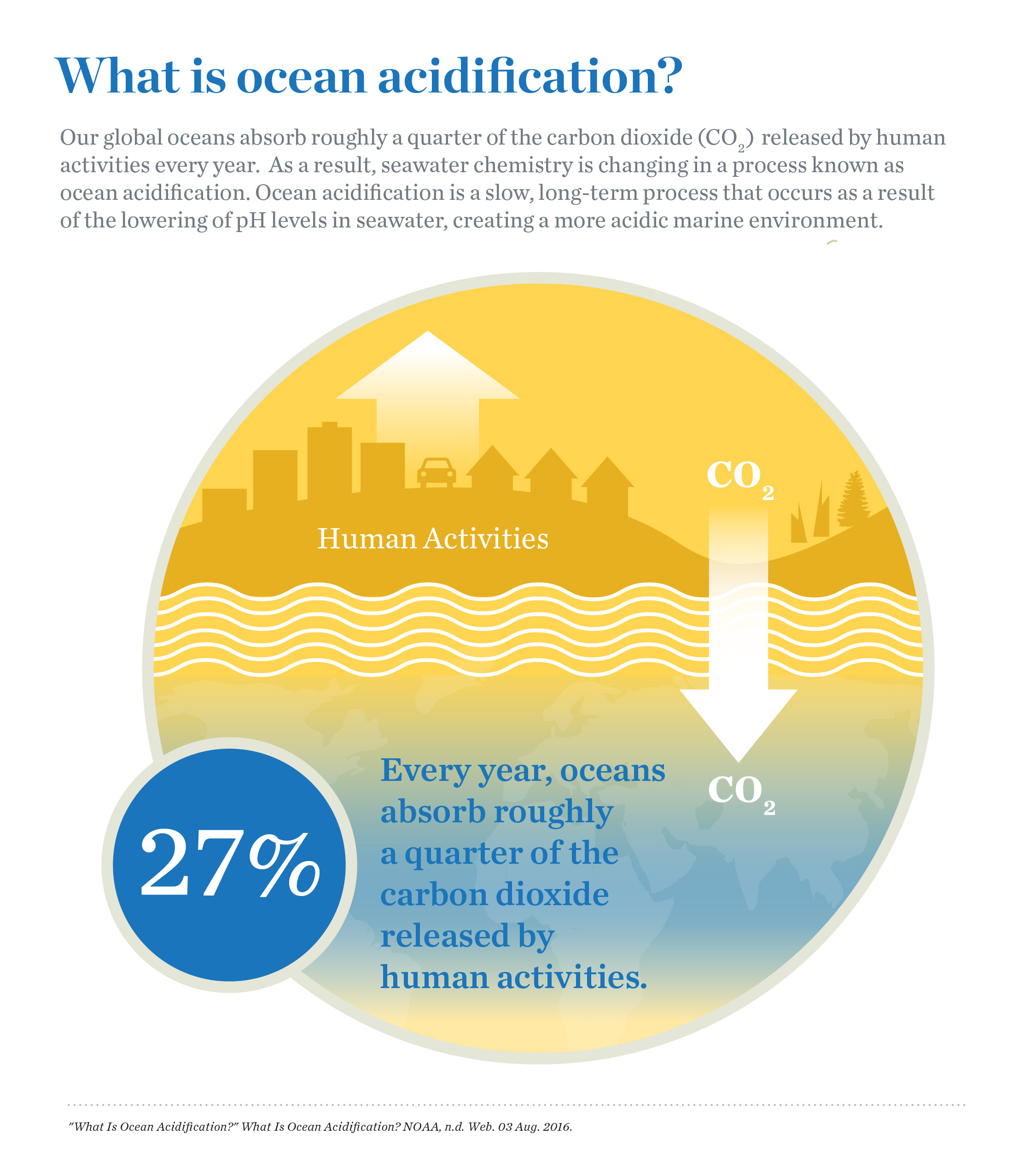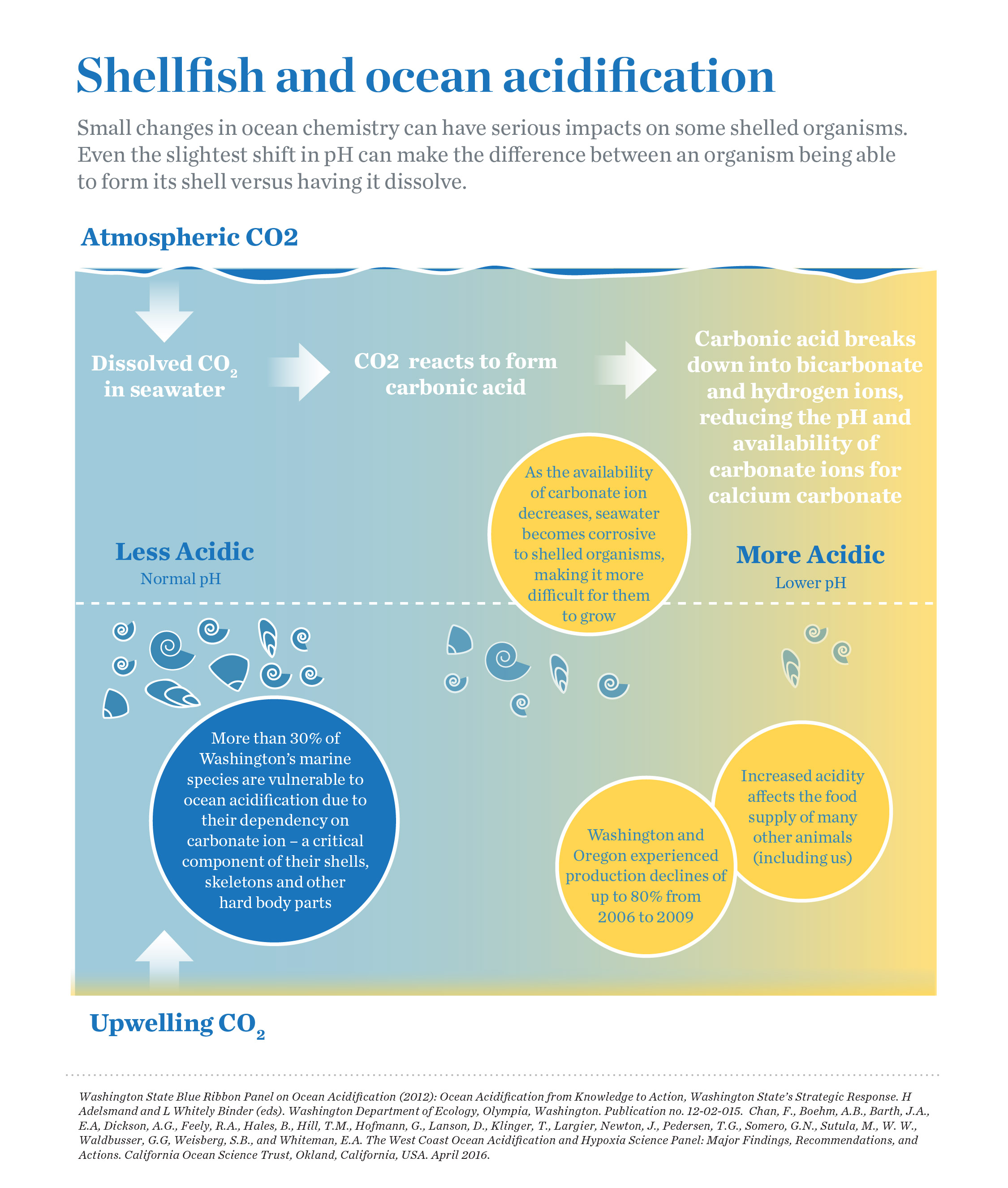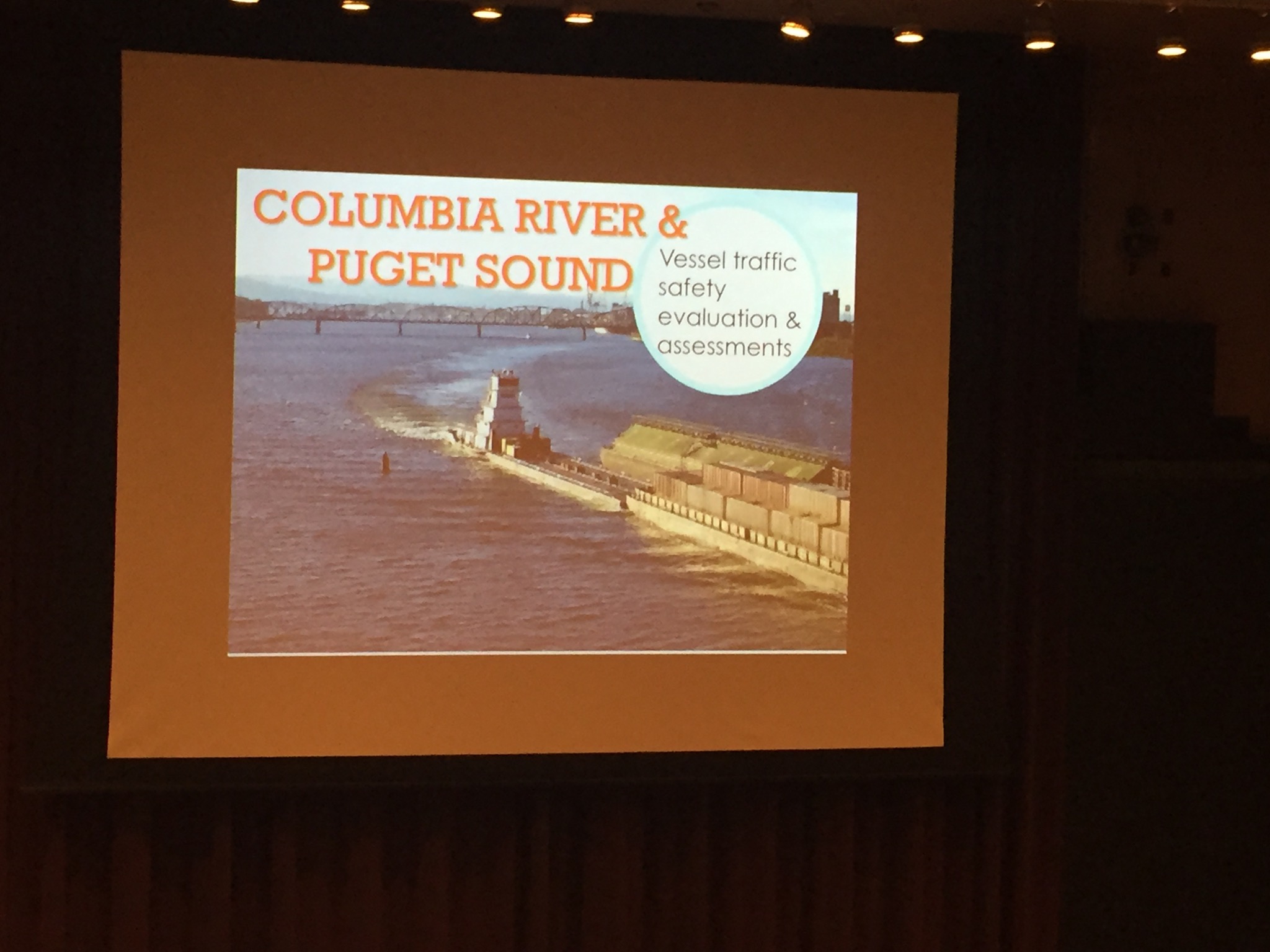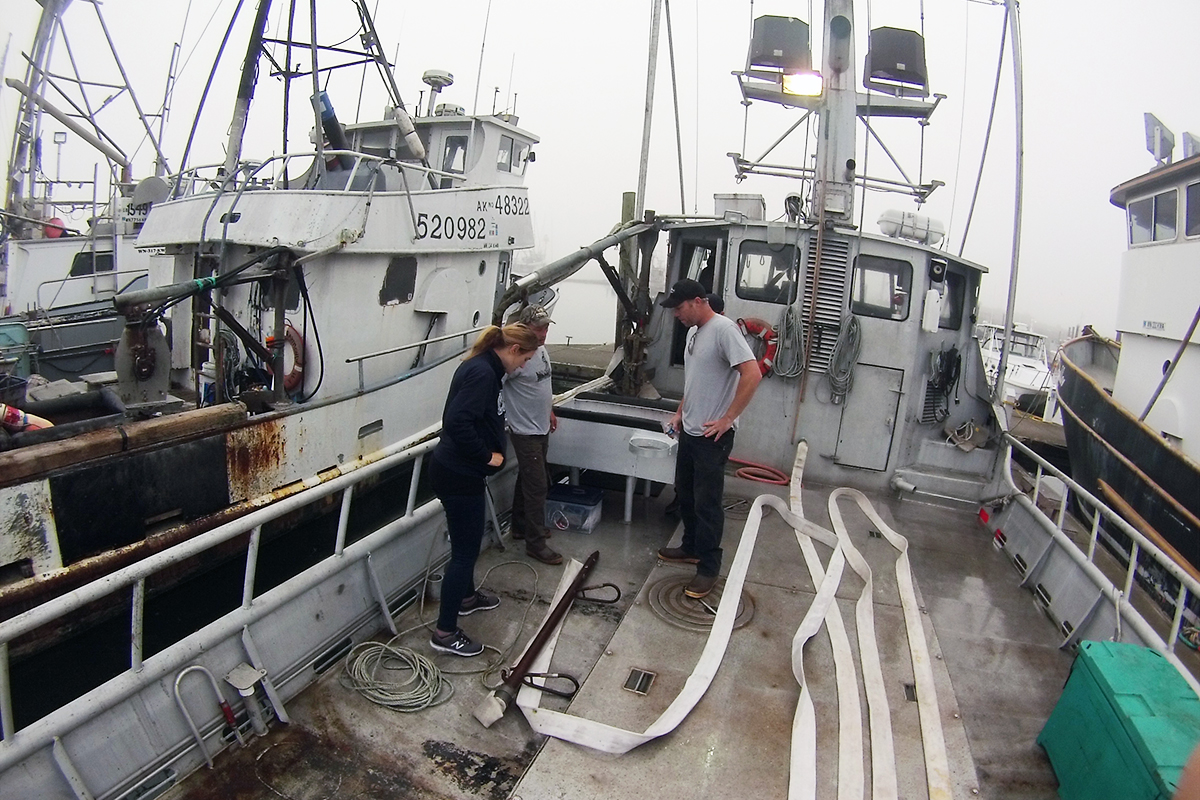At The Nature Conservancy in Washington, maps and graphics are a key communications tool to achieving a lasting conservation impact. Explore, learn and visualize how we go about our science and conservation work for the benefit of nature and people.
Shellfish Growers Bring Pearls of Wisdom to Combatting Climate Change
Aw, shucks: This week, shellfish get their due
Shellfish Growers Join Action on Climate Change
Diving for Data in Nearshore Habitats
A Shift in Our Oceans
As more and more carbon dioxide enters our atmosphere, our natural environments respond differently. Where some regions may become hotter, and others may become cooler, our oceans become more acidic. Explore the infographic below to learn more about ocean acidification and how a small shift in ocean chemistry has a big impact for our marine organisms.
Inforgraphic created by Erica Simek Sloniker, GIS & Visual Communications
There's Something in the Water: Ocean Acidification
Photos by Hannah Letinich, Volunteer Photography Editor
Written by Zoe van Duivenbode, Marketing Intern
The communities of Washington have a long, deep history with our state’s coastlines, from the Puget Sound to the Washington coast. Our marine waters are a foundation for our region’s economy, culture, and tourism. For centuries, tribes in Washington have relied on the harvest of shellfish for traditional ceremonies, subsistence use, trading and more recently, a source of income. Tourism is heavily dependent on our region’s seafood industry. Pike Place Market alone attracts 10 million people annually to experience the market’s lively atmosphere and enjoy the country’s freshest seafood. In addition, much of our marine life depends on shellfish for food and habitat. Our region’s connection to shellfish is invaluable, which is why it is essential for our community to engage in a discussion as a whole in regard to the present and future challenges we face due to ocean acidification.
Ocean acidification (OA) is a slow, long-term process that occurs as a result of the lowering of pH levels in seawater, creating a more acidic marine environment. The main driver of OA can be attributed to the amount of carbon dioxide in the atmosphere. Deforestation, land-based runoff and wastewater discharge also play into the acidifying process. Our oceans naturally absorb carbon dioxide, but after decades of rapid growth and fossil fuel burning, the natural absorption has accelerated, resulting in a more acidic environment with impacts to numerous marine species, including shellfish.
Several species of shellfish are particularly vulnerable to OA, especially larvae and juveniles. Their shells and hard external body parts require calcium carbonate, which is in shorter supply under acidic conditions. This results in a slower, more difficult development phase and increases the chance of mortality. According to the Washington Blue Ribbon Panel on OA, more than 30 percent of Puget Sound’s marine species are vulnerable to OA. In addition, OA is amplified in the Pacific Northwest because of several factors such as coastal upwelling and land-based runoff. Coastal upwelling is when carbon rich and acidic waters travel from the deep ocean and move into shallow waters. Due to the upwelling process, our seawater is naturally more acidic than other marine environments and in combination with OA, the impact of acidification is amplified.
Currently, TNC is working to cut carbon dioxide emission by reducing local land-based contributions to OA through green infrastructure development, installation of rain gardens and forest conservation. The combination of these efforts help to relieve the ocean of its enormous carbon load by decreasing the amount of atmospheric carbon dioxide and carbon rich runoff that flows into the Puget Sound. Although OA is a global issue, our region is among the first to experience its negative impacts. As a community that is so closely tied to the health of our ocean and shellfish, it is important for us to work together and do our part to mitigate the impacts of OA.
Oyster Love: All the Ways They Benefit Us
Created by Erica Simek Sloniker, Visual Communications
Oysters are filter feeders. An adult oyster can filter 25 gallons or more of water per day in search of food. In doing so, they filter algae from the water, reducing nutrient loads and keep bay water clear so that eelgrass and other marine life can thrive.
More oysters equal cleaner water for everyone. Fewer oysters means our bays and estuaries are worse off. And if water is too polluted, the oysters living in it can be poisonous for us eat.
The Conservancy, shellfish growers, and other partners like the Puget Sound Restoration Fund and Washington Department of Fish and Wildlife are working to restore wild, native oysters in the bays of Puget Sound.
LEARN HOW WE PROTECT OUR OYSTERS
Working together leads to a BIG WIN for Puget Sound!
By Noelle van der Straaten, TNC Volunteer Content Specialist
Photography by Andy Porter Photography
Salmon, shellfish, farms and water quality are top priorities in a new Farm Bill conservation program, administered by the U.S. Department of Agriculture. TNC was instrumental in securing funding via this program - the Regional Conservation Partnership Program (RCPP). This program works to provide conservation assistance to producers and landowners in promoting the restoration and sustainable use of critical watersheds and landscapes.
The Conservancy will serve on the steering committee and the Puget Sound Natural Resource Alliance will be the advisory committee. This collaborative alliance represents a diverse group of leaders and stakeholders - tribes, farmers, conservation groups, private sector interests and academic institutions - all working together to strengthen the long-term viability of our natural resources and local economies.
Funding has been approved for a 5 year project with a budget of $18 million ($9MM from NRCS and $9M in matching funds from state and other private sources), that will be used for a wide variety of local working-lands conservation programs including: farmland protection, voluntary incentives for habitat restoration on farms, upgrades in water quality infrastructure and on farm practices for improving water quality. Implementation of these practices and innovative strategies will deliver tangible lasting results, benefiting farms and forests as well as local economies and communities. This is a big win for the Puget Sound region and will strengthen the viability of agriculture and advance shellfish and salmon recovery goals!
Infusing local efforts
Some local projects that will greatly benefit from this funding include:
- Thomas Creek, a sub-basin of the Samish Watershed, is part of a project that is working to upgrade 4,000 acres of shellfish beds that have been closed due to contamination by fecal coliform from upstream land uses. This project will focus on working with landowners in implementing best practices to reduce water contamination and support the local economy by reducing closures of Samish Bay shellfish beds.
- The Skykomish River project is working with agricultural producers to enhance salmon habitat by managing nutrients and planting trees along the banks of the Woods Creek watershed. This area contains streams and rivers that are impaired with dissolved oxygen and temperature issues. This project will work to enhance habitat and water quality suitable for salmon.
Moving forward together
This funding really kickstarts an emerging relationship between farmers, tribes, and conservation interests. It enables local communities to rally around priority projects that have long been on the books and need an infusion of funds to make progress. Working together, we can get so much more done.
The goal of this funding is for this collaborative alliance to work together in community-led projects and to develop and implement stewardship practices that will help ensure a future of abundant salmon and shellfish and more resilient farms in the Puget Sound region!
















































